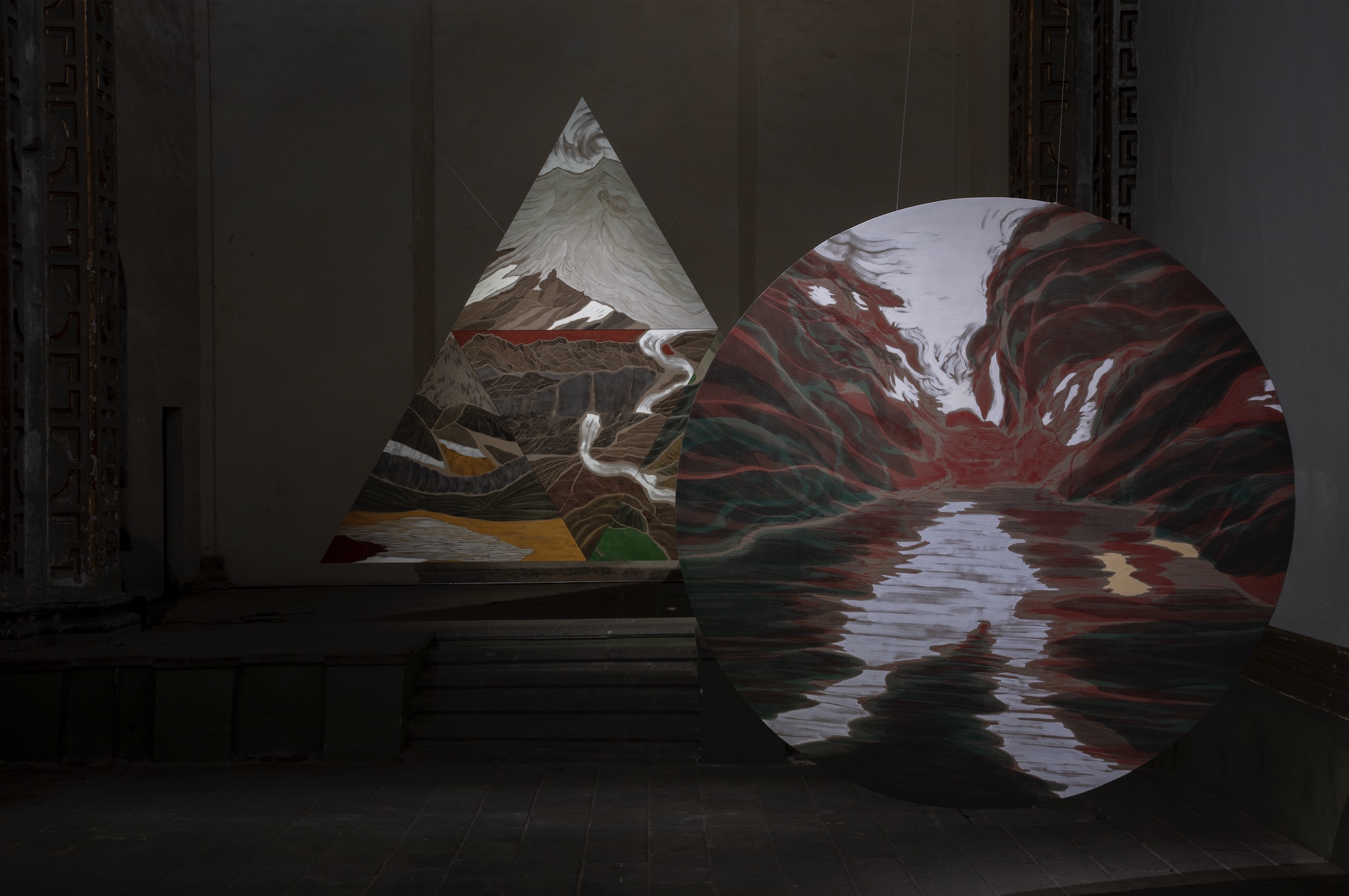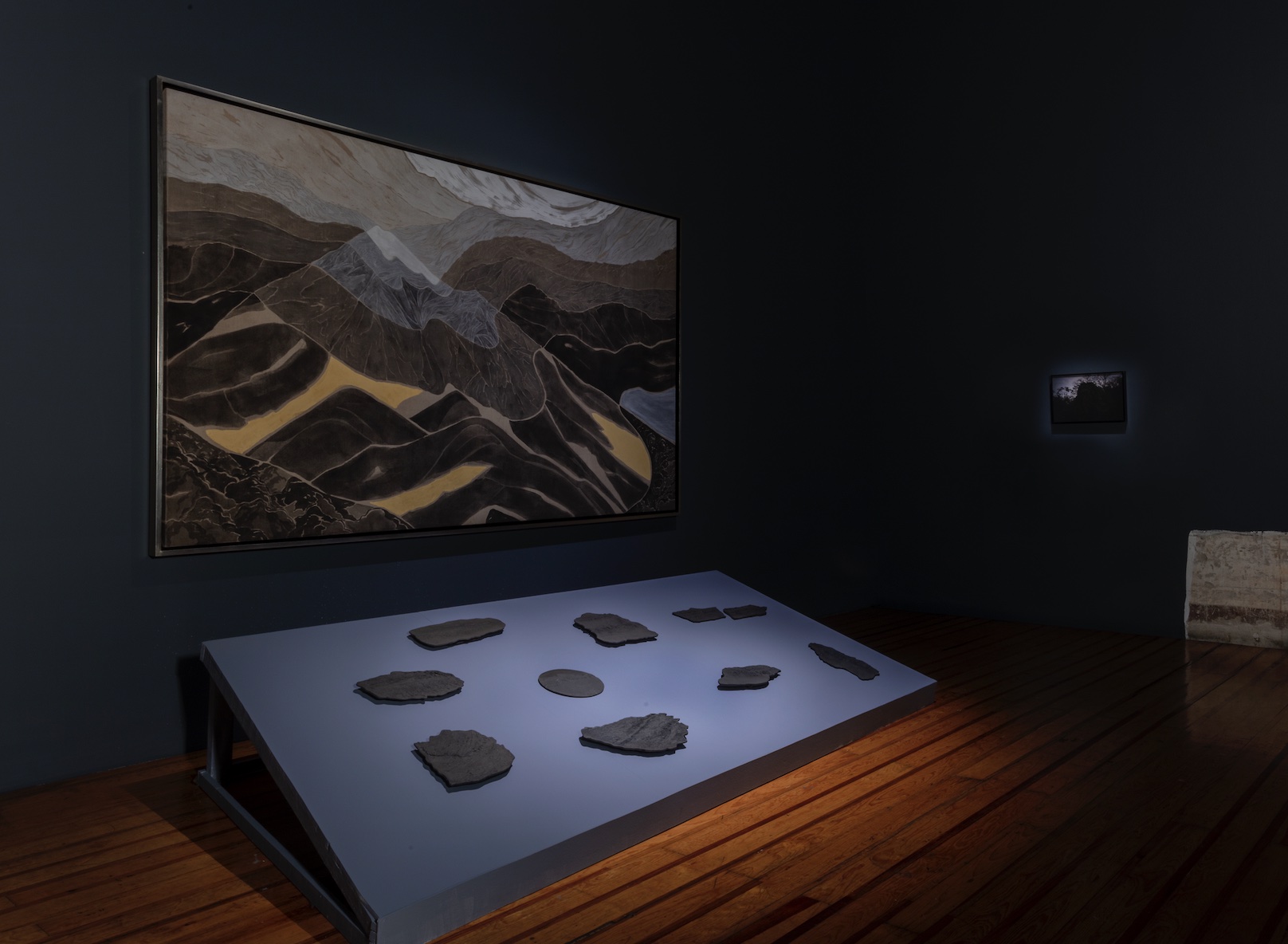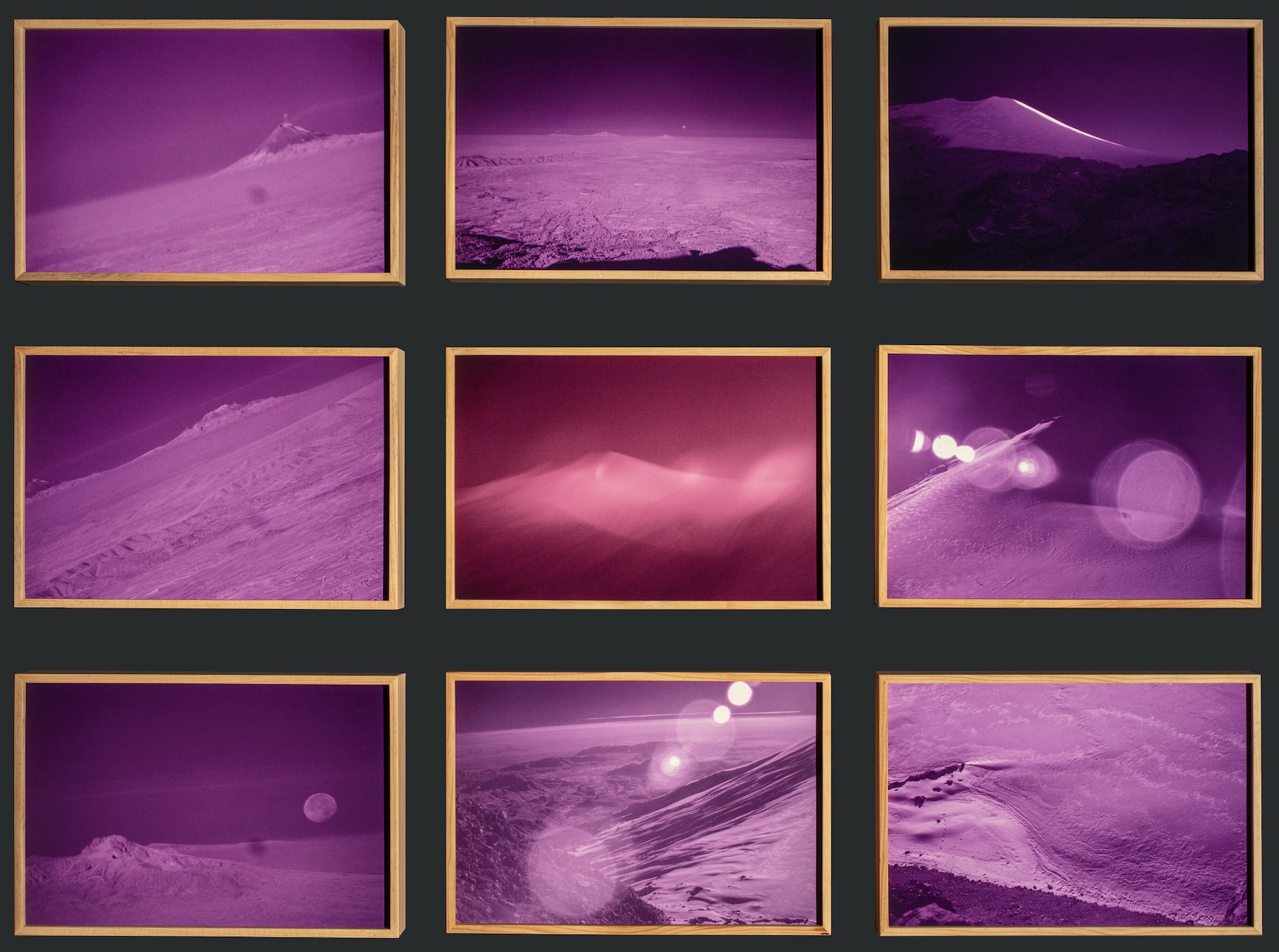
Review
Echo. Tania Ximena at Ex-Teresa Arte Actual
by Mariana Paniagua
Reading time
5 min
My dream is so deep
that it seeps beneath the seas
Irene Solà, Canto yo y la montaña baila
The echo of a constant dripping anticipates the solidity of the image; something spills over. As I approach the darkness of the Ex-Teresa Arte Actual museum¹, the video installation Devenir suggests that something is not only overflowing, but rather it is disappearing.
Tania Ximena documents the melting of the last glacier of the Citlaltepetl volcano–also known as Pico de Orizaba–the Jamapa. And she researches some of the links that people close to the mount have developed with it.
The exhibit is made up of video installations and paintings, as well as photographies by Guillermo Ontiveros and Fernando Velázquez, and a textile art piece by Carmen Toca, some of the project’s collaborators.
The sound of running water reverberates from the tops of the venue's walls and cupulas. A world beyond our size is revealed by this sound. The deglaciation's trickle, which Carlos Edelmiro musicalized, breaks the pensive mountain cliché and establishes the rhythm of time.
Three paintings hover in the first room's darkest corner, vaguely lit, and seem to be fixed there by virtue of their format, almost like symbols. Tania's paintings are similar to the motion of water and rocks—and their interaction—as though these motions had also passed through her body, in contrast to the geometric patterns that confine them. She doesn't make reference to the location's economic, geographical, or scientific details; instead, her narrative is told through the fabric's earthy hues, telluric motions, and trace speed.

Divided into three panels, in the main video installation (2019-2013) we can see Fernando, Guilermo, and Carmen, each one interacting with different physical states of the glacier. One on ice, another on a seemingly warmer body of water and her, on the seashore.
The figure walking on the ice is not shown in the middle of the video, and its size is reduced while the mountain seems larger in our frame of view. Whereas over there, at the summit of the volcano, stillness meets rock until it becomes sound, the trekkers are now at sea level. The lofty, chilly walls brush against and beautify one another with the mist. Up there, they speak a different language, and something from a distant past appears.
The next sequence is that of water running under a fragile sheet of ice: the transparency of the mountain showing its softest parts.
The show's video documentations, which are more than just archives, are woven with a lyrical look that generates a kind of register that feels the present moment rather than just remembering it. a living memory that has been evolving since its creation.
The next room has a painting called Mi mente y la montaña están en constante estado de erosión, which means "My mind and the mountain are eroding constantly." It has raw gray tonalities running through the fabric, with each section's unpainted rim serving as a separator, giving the impression that the painting is analyzing the various movements of the rock or its plates. The ceramic pieces of a rock wall are kept on a table outside the canvas where the dissection is still ongoing.

Near these pieces, an oral narrative is conveyed next to a low-resolution digital photography that becomes a very subtle image; a sequence of images seemingly captured by a space robot explorer, along with a glowing yarn web, initiate the space where the subjectivities of the Río de Niebla, Río de Adobe, and Río de Sangre collaborators seem to flow. Where each person uses their own material language to build their own mountain. Through their joint effort, the four creators, albeit utilizing distinct formal frameworks, build a web that allows them to tune in to the delicate sounds and movements of the Jamapa and the Citlaltepetl.
It is with the many voices of those who preceded us, of those around us, and those who are yet to come that memory and the imaginary are potentiated, ceasing to strengthen only the enunciating voice of the "I" in artistic practices.

What we have seen and what we are to see, that which attests us, and what threads itself with the non-linear landscape of collective memory, which leaves the body in order to grow to different directions and times, live memory that sharpens the attentive listening of the world and traces the route which goes from the vital dynamics of nature towards the symbolic and back. What comes from the deep and flows into it.
The relationship between the lightning that strikes who will become a tiemperx² and the knowledge that they will have about dreams, intuitions and the weather forecast in benefit of their community, is circular.
Intuition, beyond mysticism, is material and vital. It is also made up of our conscious attention.
What can be the communication bridge between the powers of the natural environment and ourselves?
Tania Ximena, far from presenting an answer to a geological or anthropological question, builds a bridge of which we can not see the beginning nor the end, rather, through her poetics, she invites us to transit the in between.
Translated to English by Luis Sokol
¹ The exhibition 'Río de Niebla, Río de Adobe, Río de Sangre', curated by Michel Blancsubé is open through March 17, 2024
² In Puebla, people are known as "tiemperos" or "tiemperas" when they have been close to a mystical experience through a dream or an accident that brings them close to death (usually a lightning strike) and can guess or manipulate the weather conditions in favor of the community's agricultural work. You can read about it in Alicia Juárez Becerril's digital publication Observar, pronosticar y controlar el tiempo: apuntes sobre los especialistas meteorológicos en el Altiplano Central. UNAM, Instituto de Investigaciones Históricas, 2015.
Published on January 19 2024